Have you ever wondered how the idea of the electric rice cooker began? In this article we dig deep into this exact topic – it’s absolutely fascinating if you like rice and enjoy the benefits of using electric rice cookers.
Let’s face it, cooking on a stove can be very troublesome. If you don’t time or measure things correctly you can end up with mush or a complete mess of an oven top. A recent viral video by Malaysian comedian Nigel Ng shows him reacting dramatically to a BBC personality cooking rice with a saucepan rather than using a rice cooker. “World War Two is over, use technology!” he admonished viewers in a follow-up on his Instagram. He is exactly correct. The ‘automatic rice cooker’ is a mid 20th century invention that made the culinary labour intensive task of hovering over a stove as easy as measuring rice and water in a rice cooker and pressing a button. They can be super smart too and are almost impossible to mess things up. However, the creation of these wonderous kitchen appliances was not easy. It took determination and some significant inventive leaps by even the biggest of names in Japanese technology.
The Kamado
The ancient way of cooking rice in Japan was to use a Kamado. This is a box shaped cooker range topped with a heavy cast iron pot. This traditional method of rice cooking was incredibly tricky. A careful combination of heat and less heat was used to cook the rice but doing this with a wood fire was an almost impossible task. Every day, Japanese women would spend hours sweating over the Kamado to make rice. This often involved waking at dawn and bellowing the flames for 15 minutes before they could even think about getting the rice cooking.
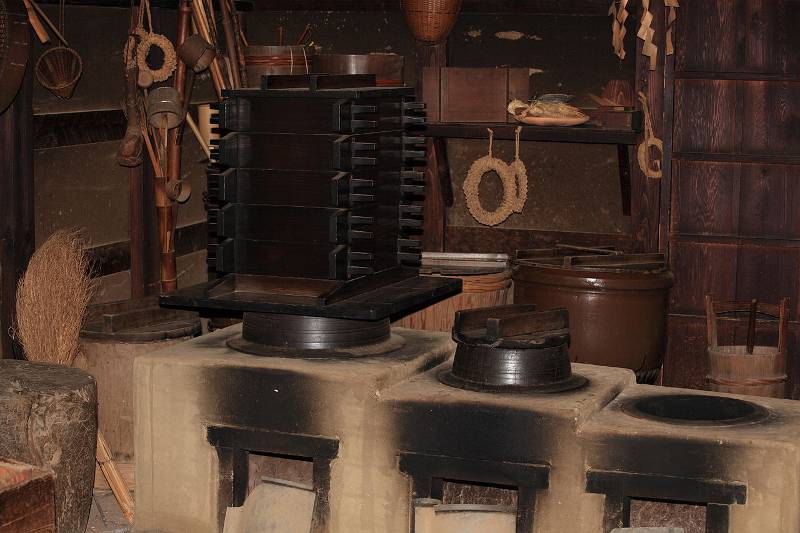
The early attempts of Ibuka
The birth of the rice cooker happened around the year 1923. A company called Mitsubishi Electric released a very basic industrial model. About 10 years later the Japanese even deployed a multi cooker in the war but rice cookers for the household were still decades away. It was an uphill struggle because with Japanese rice some starch has to be converted to sugar so that it has a sweet taste with a sticky texture, separate grains and the correct moisture. Japanese people were incredibly picky about their rice and finding an automated way to make the perfect rice was still only a dream.
In 1945 war torn Japan faced an uphill struggle of rehabilitation and rebuilding when an engineer called Masaru Ibuka opened a radio workshop. He chose an abandoned telephone switchboard room in a vacant department store as his new headquarters. A year later Ibuka wrote down the words that would become iconic to the company that in 1958 would become known as Sony: “Purpose of incorporation: Creating an ideal workplace, free, dynamic, joyous.”
As his company grew, Ibuka’s engineers received payment of uncooked rice in part payment of their fixing radios. This resulted in the companies first invention. No, not a radio – but instead an electric rice cooker. It was crude but effective resembling a rustic wooden tub with aluminium filaments (see image left). It was an ingenious idea! The rice itself would function as the timer switch, as the water evaporated and the rice dried it would theoretically break the connection with the filanent and turn off the cooker. Whilst the future for post-war Japan was getting brighter, fuel remained expensive but electricity was relatively cheap and plentiful. Ibuka bought a whole container of wooden tubs and started to turn them into electric rice cookers with the help of a friend who supplied black market rice to help test them. However, Ibuku claimed that unless the rice was of a good consistent quality there would be a problem as poor quality rice would absorb water incorrectly and make it mushy or too dry, flaky or broken.
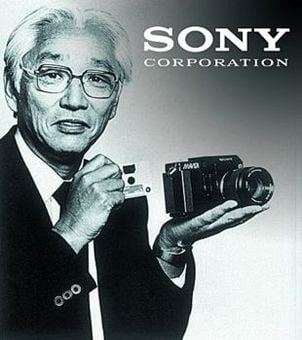
I remember sitting there on the third floor in Shirokiya day after day being fed rice that wasn’t fit to eat,” Ibuka recalled much later.
The warehouse of Ibuka was filled with wooden tubs and Ibuka lost hope of making the perfect rice cooker and went back to fixing radios. Sony never returned to making rice cookers but their corporate museum in Shinagawa still have one of the rustic wooden bucket rice cooker prototypes. Sony’s attempt into the rice cooker evolution was fleeting but gave ideas to other Japanese electronics companies at the time. Many released electricity powered rice cookers but they were not automatic – having to be constantly monitored.
The struggle to make a working automatic rice cooker
That was until a salesman called Shogo Yamada working for Toshiba, promoting the companies first electric washing machine, made it a success. Going from Japanese kitchen to kitchen he often asked housewives about their most laborious task. Their answer was nearly always about the daily cooking of rice (up to 3 times a day) which at that time was still often performed using a kamado. A very fortuitous chance meeting then happened between Yamada and Yoshitada Minami who came looking for work with Yamada. With his background in making water heaters (unsucessfully) Minami was tasked by Yamada to come up with a rice cooking machine Since cooking rice was largely a woman’s task back then, he passed much of the research for this project to his wife, Fumiko.
The invention of a rice cooker at Toshiba wasn’t given priority because Yamada’s supervisors had seen Mitsubishi and Matushita (what would eventually become Panasonic) fail at creating an automatic electric washing machine. They also believed that any woman that gave up their time, effort and the sleep it took to make perfect rice was a ‘failed houswife’.
Minami had the engineering knowledge to make an automated electric rice cooker work but his wife knew how to cook the rice perfectly and did that on a traditional kamado everyday to feed their six children. To stall the project Minami took out a loan using their family home as collateral while Fumiko studied the existing rice cookers on the market. The idea of the rice cooker they came up with was that when water in a pot of rice has been totally absorbed or evaporated away, the temperature of the container increases rapidly (since the temperature of liquid water generally can’t exceed 100℃, but the temperature of rice certainly can), the magic to make this work automatically was a bimetallic strip provided by Yamada to Toshiba that would turn the rice cooker off by bending once the temperature in the pot exceeded 100℃.
Fumiko endlessly tested prototype after prototype, cooking rice on the roof, in the sun, in the cold, and in the heat. Preventing the pot from releasing heat during cooking was challenging. However, Yamada remembered that in Hokkaido state (where the winters are brutal) the cooking pots there were heavily insulated. Their final product therefore had a two layered wall. One inside and the other coered in three layers of iron. Toshiba’s first automatic rice cooker, the ER-4 was then ready for mass production.
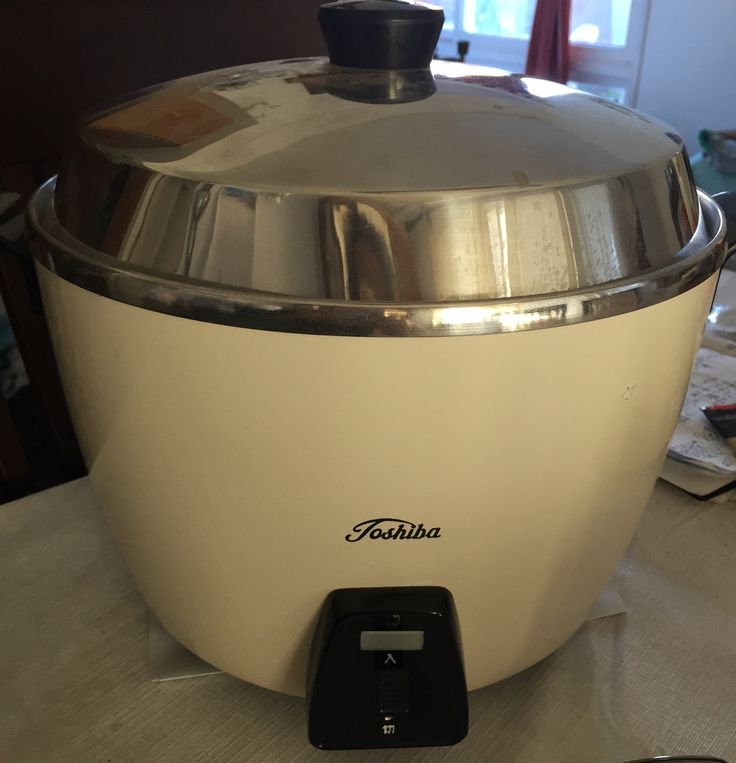
Getting the world to see the huge benefits of the gadget
These gadgets wouldn’t come cheap however and many Japanese housewives were hesitant to buy one. Yamada went on the road to demonstrate the effectiveness of how the rice cooker not only prepared the rice but also how it could perfectly make takikomi gohan, a finicky rice dish with a soy-based sauce that often burned. The culinary masses got hooked and within the year, Toshiba was producing 200,000 rice cookers every month!
On the trail of Toshiba’s success, the rice cooker manufacturing war began. The next year, Matsushita Electric, now better known as Panasonic, jumped into the fight. The companies employees were horrified that Toshiba had beaten them with this miraculous gadget. Matsushita was the most well known for it’s household gadgets after all. It was therefore seen as a disgrace that such a convenient home appliance as the rice cooker should have come from Toshiba, a manufacturer that was better known for producing industrial machines
How the rice cooker went global
Matsushita’s president, Konosuke Matsushita gave one employee such a berating that colleagues feared he would commit suicide. That man was Tatsunosuke Sakamoto and he was very passionate about rice cookers. He had a dream of a market for international demand of such gadgets. To get ahead of the Toshiba competition Matshushita needed to make a rice cooker with only one pot. This would use less metal and result in a cheaper device. Matsushita released their EC-36 rice cooker, with its single pot, in 1956 then in 1959, Sakamoto, now head of the company’s Rice Cooker Division, teamed up with William Mong, the Hong Kong-based distributor of Matsushita products. They modified the rice cooker for Hong Kong consumers and Matsushita learned how to adapt the rice cooker to international tastes before finally taking the gadget to Asia, the Middle East, and around the world.
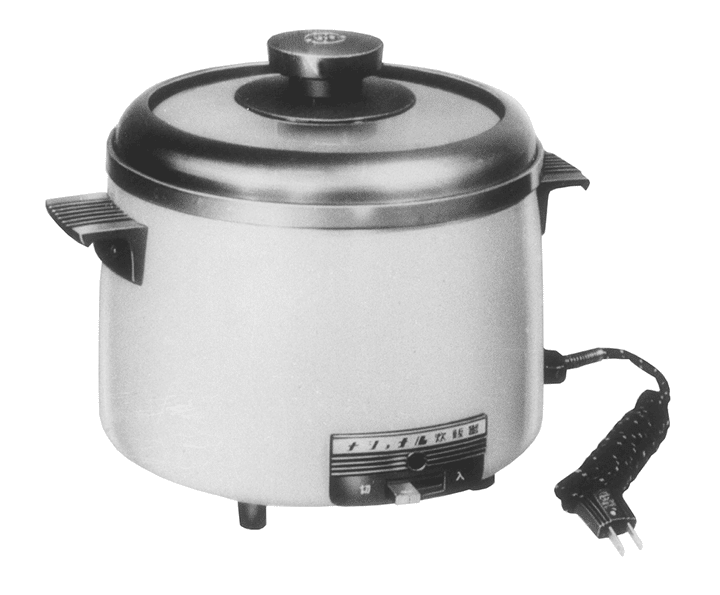
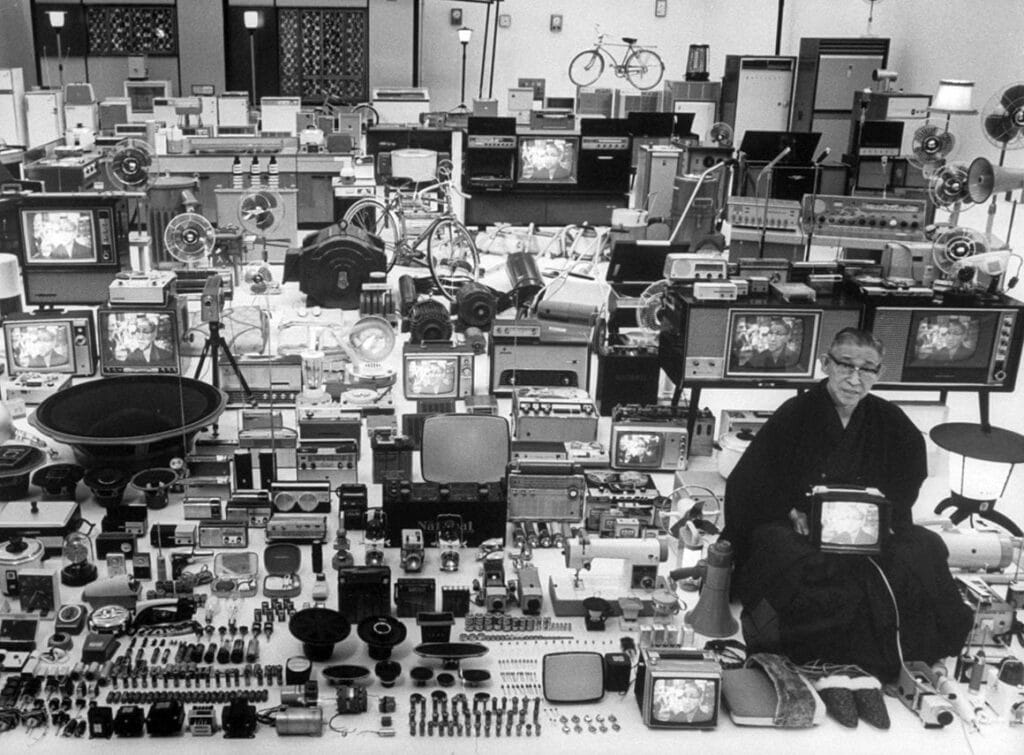
An icon and a game changer
The electric automated rice cooker became so iconic that even the Smithsonian museum has a Matsushita rice cooker in it’s collection. This was a simple on/off one button appliance with a basic keep warm function. By the 1970s such cookers were quickly adopted by older rice-centric communities in South Carolina and Louisiana and by newer counter-cultural Americans who were increasingly interested in alternate cuisines and culinary practices. In a way, it was the culmination of Sakamoto’s dream.
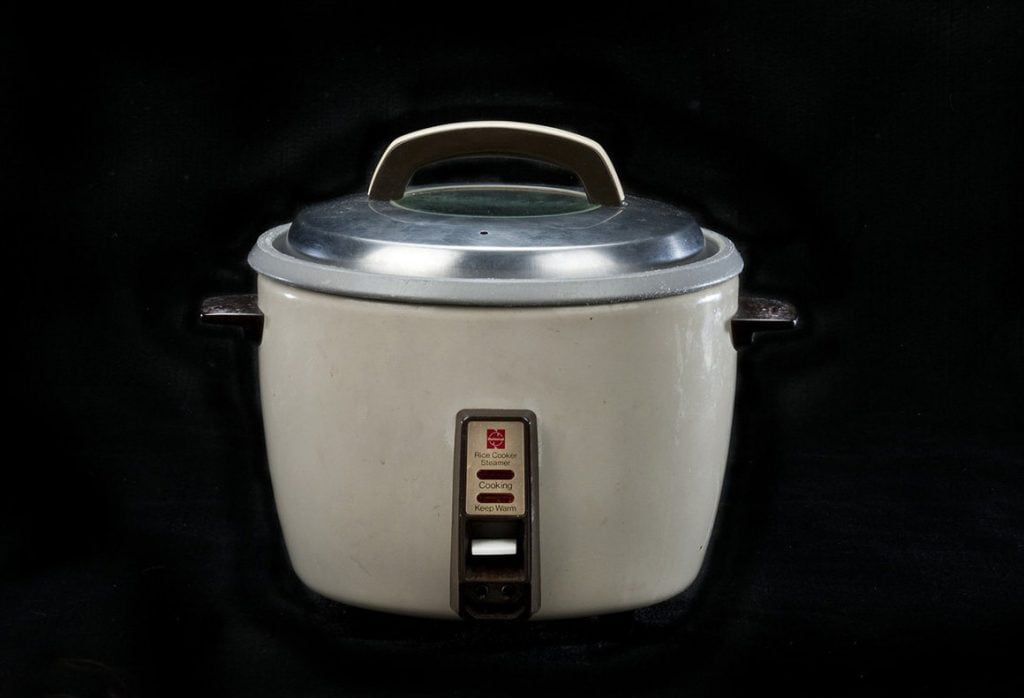
Within a few years of the automated electric rice cooker release, more than 50 percent of Japan’s households had one. It completely revolutionised work in the kitchen and was THE one household appliance that every household in Japan wanted. The advertising for Toshiba’s first rice cooker emphasized over and over that it would liberate women from standing or squatting at the kamado, constantly keeping an eye on the rice. Agreed, it did ease the laborious hovering over the kamado but didn’t result in a win for women’s liberation. However, it gave women more time to enter the workforce, do other household chores and spend time with their family.
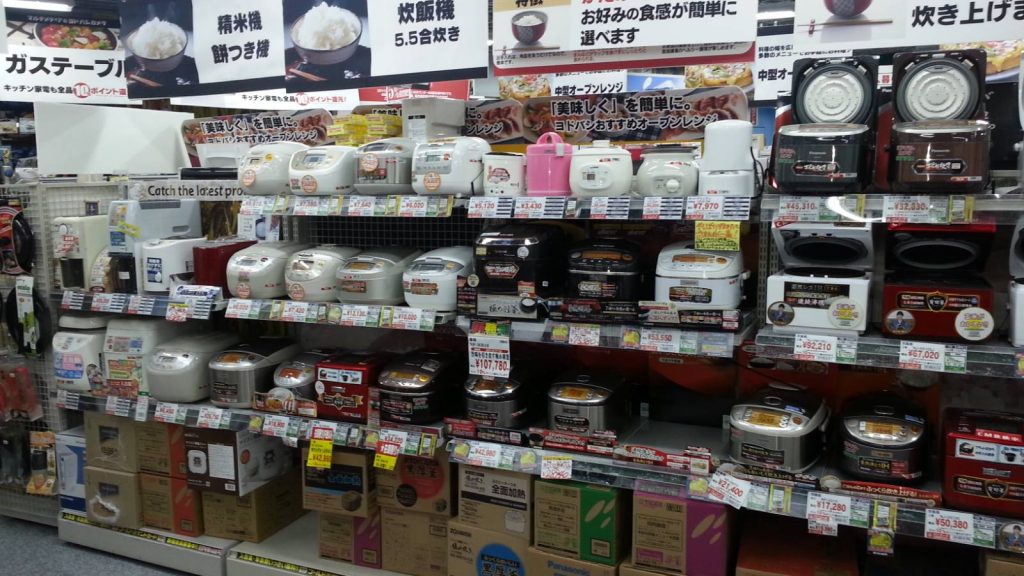
Present day rice cookers
Nowadays the variety of automated electric rice cookers is large. Many rice cookers for the home use technology and inner bowl materials to recreate the flavour of kamado-cooked rice, which is still widely available in traditional restaurants. Only the development of induction-heating cookers in the 1980s have allowed for the kind of instant high temperatures that a wood-burning stove produces and the ability to agitate the rice like that of kamado operator. For those not seeking the flavour of the kamado more basic rice cookers may be the best choice. Without any microcomputers or touchscreens, they still operate using a single button and a design that halts cooking once the container surpasses 100°C but they only boil the rice rather than modulate the cooking pot temperature varying the style of cooking like a kamado operator would do (steaming, boiling, braising etc).
The morale of this story is this. Perfection takes time. More so for cooking rice perfectly and if you want a device that makes rice that tastes amazing like that from a kamado it’s probably worth investing in something a little bit more than a basic on/off button rice cooker.















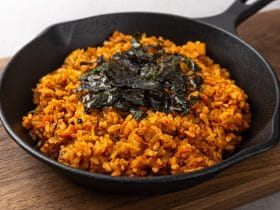



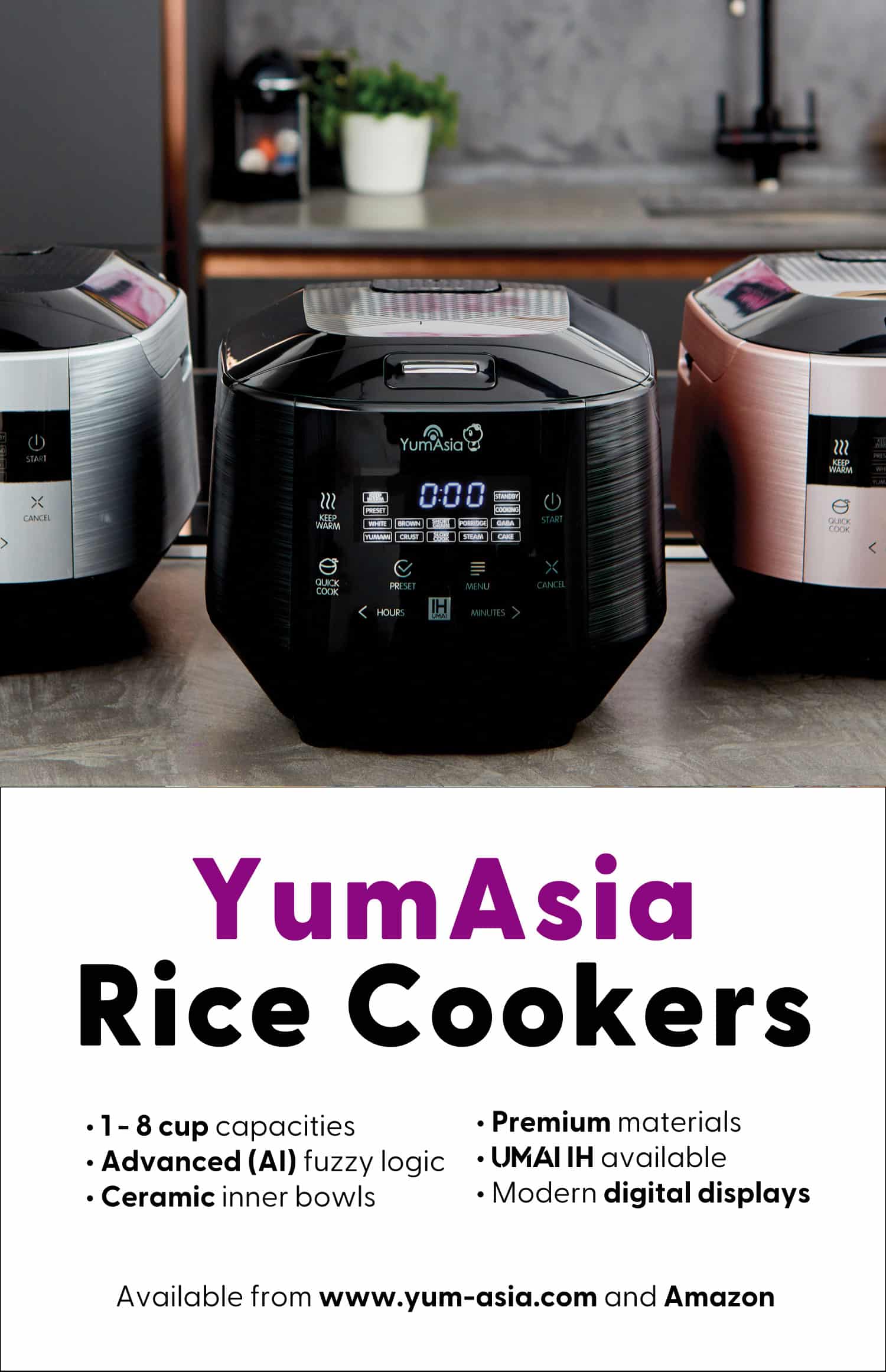






Leave a Reply